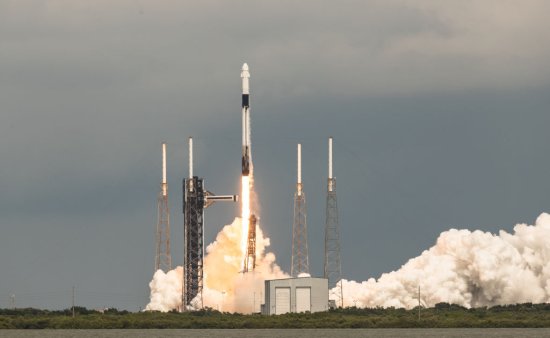
Two astronauts relinquished their seats on a four-person spacecraft so that their colleagues could return to Earth from the ISS, where they’ve been stuck since June.
SpaceX launched a two-person crew to the International Space Station, the start of a mission to bring home two NASA astronauts stuck in orbit after flying on Boeing Co.’s Starliner spacecraft.
NASA astronaut Nick Hague and Russian cosmonaut Aleksandr Gorbunov took off inside a SpaceX Crew Dragon from Cape Canaveral, Florida, just after 1 p.m. on Saturday. The Crew-9 capsule docked with the ISS on Sunday at roughly 5:30 p.m. Eastern time and Hague and Gorbunov entered the ISS about 90 minutes later.
[time-brightcove not-tgx=”true”]Read More: How Two Stranded Astronauts Are Camping Out in Space
The pair had two empty seats next to them that NASA astronauts Barry “Butch” Wilmore and Sunita “Suni” Williams will fill when the spacecraft returns next year.
The Crew-9 flight was meant to have a four-person crew but NASA removed two crew members to make room for the Starliner duo after technical failures with Boeing’s spacecraft. Astronauts Zena Cardman and Stephanie Wilson relinquished their seats so their colleagues could return to Earth.
“We’re going to find spots for them to fly,” Ken Bowersox, NASA’s associate administrator for space operations, said of Cardman and Wilson during a Friday news conference. “We really appreciate how hard it is to give up a mission and wait a little bit longer.”
Wilmore and Williams have been on the ISS since June 6, when they arrived on Starliner. During their docking, the spacecraft experienced a number of helium leaks and failures of its thrusters—tiny engines the vehicle uses to maneuver through space. After months of analysis and testing, NASA decided it was too risky to bring them home on the Boeing capsule.
Read More: What to Know About the Leak at the International Space Station: ‘A Top Safety Risk’
The agency and Boeing instead returned the spacecraft uncrewed on Sept. 6, with the spacecraft landing under parachutes in New Mexico.
“When Starliner landed safely, it was wonderful that it made it back,” Wilmore said during a Sept. 13 news conference from the space station.
SpaceX’s crewed flights for NASA last about six months, with this vehicle slated to return around February. Wilmore and Williams’ flight on Starliner was supposed to last roughly a week.
“We always miss our families. I miss my two dogs; I miss my friends,” Williams said earlier this month. “There are so many people on Earth that are sending us messages, and it makes you feel just right at home with everybody.”